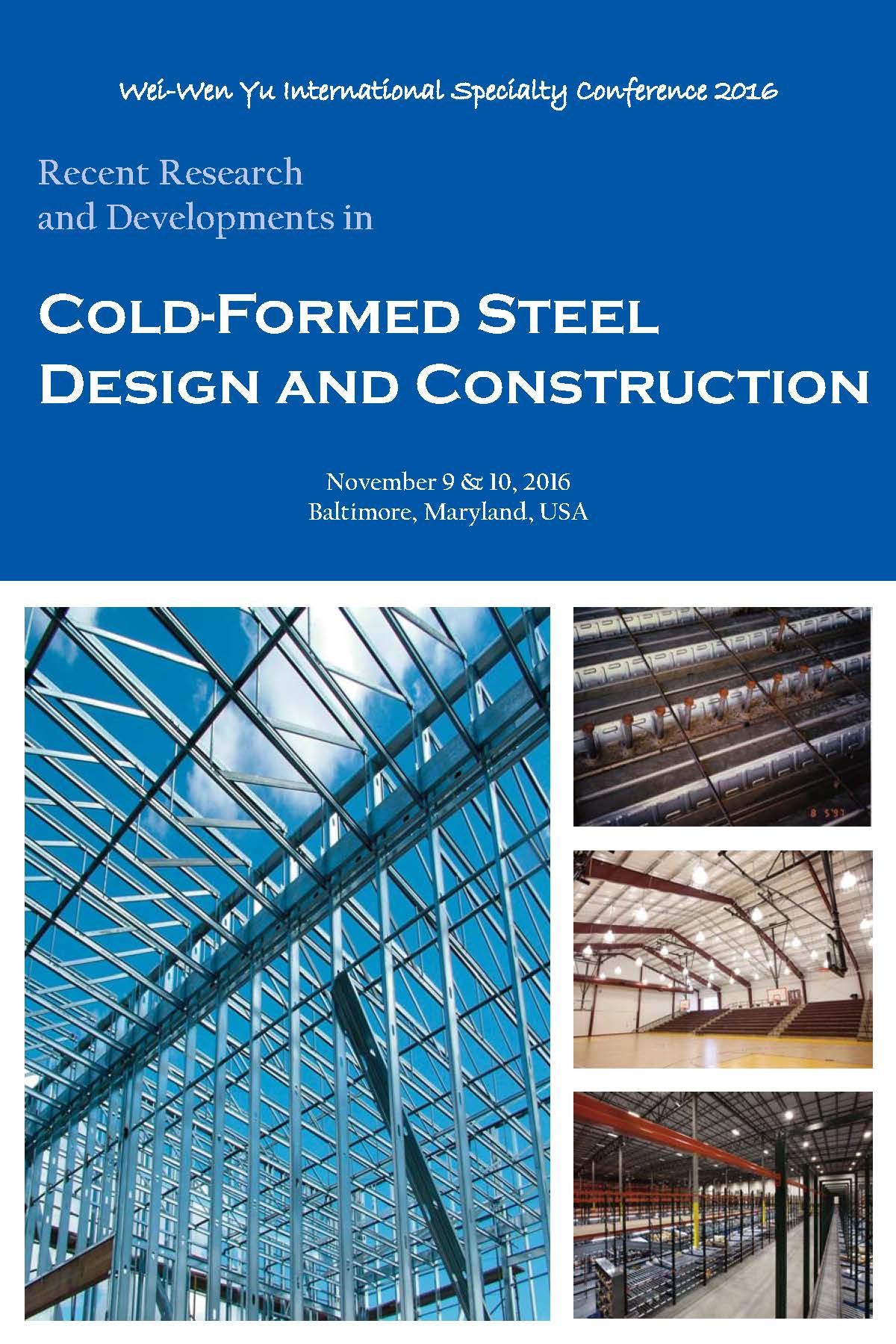Session Dates
10 Nov 2016
Abstract
This paper considers the behaviour of a cold-formed steel truss system that uses a novel pinned connector for the joints, to be referred to as the Howick Rivet connector (HRC). Use of the HRC allows a pinned concentric joint arrangement to be formed, as well as the more usual eccentric joint arrangement used in tests described in the literature. However, with the concentric joint arrangement, it is necessary to remove part of the lips of the channel-sections being connected, thus creating a discontinuity in the lips. This paper assesses the effect of this discontinuity. Full-scale truss tests are first described. The trusses have span of 6 m, depth of 1.8 m and length of diagonals of 2.3 m; both pinned concentric and pinned eccentric joint arrangement are tested. It was shown that the mid-span deflection of the concentric joint arrangement in the elastic range is 3 times smaller and 64% stiffer than that of the eccentric joint arrangement; the overall failure loads, due to flexural-torsional buckling of the diagonal members, were found to be similar, and were not influenced by removal of part of the lips of the channel-sections. To investigate the effect of removing the lips for the concentric joint arrangement, a series of truss panel tests were performed for which the length of the diagonals were 0.6 m. Failure was found to be localised buckling at the discontinuity where the lips were removed.
Department(s)
Civil, Architectural and Environmental Engineering
Research Center/Lab(s)
Wei-Wen Yu Center for Cold-Formed Steel Structures
Meeting Name
International Specialty Conference on Cold-Formed Steel Structures 2016
Publisher
Missouri University of Science and Technology
Document Version
Final Version
Rights
© 2016 Missouri University of Science and Technology, All rights reserved.
Document Type
Article - Conference proceedings
File Type
text
Language
English
Recommended Citation
Ahmadi, Amin; Yee, Colin K. L.; Shepherd, Harry J. S.; Clifton, G. Charles; Das, Raj; and Lim, James B. P., "Behaviour of Cold-Formed Steel Trusses with Concentric and Eccentric Joint Arrangements using the Howick Rivet Connector" (2016). CCFSS Proceedings of International Specialty Conference on Cold-Formed Steel Structures (1971 - 2018). 7.
https://scholarsmine.mst.edu/isccss/23iccfss/session8/7
Behaviour of Cold-Formed Steel Trusses with Concentric and Eccentric Joint Arrangements using the Howick Rivet Connector
This paper considers the behaviour of a cold-formed steel truss system that uses a novel pinned connector for the joints, to be referred to as the Howick Rivet connector (HRC). Use of the HRC allows a pinned concentric joint arrangement to be formed, as well as the more usual eccentric joint arrangement used in tests described in the literature. However, with the concentric joint arrangement, it is necessary to remove part of the lips of the channel-sections being connected, thus creating a discontinuity in the lips. This paper assesses the effect of this discontinuity. Full-scale truss tests are first described. The trusses have span of 6 m, depth of 1.8 m and length of diagonals of 2.3 m; both pinned concentric and pinned eccentric joint arrangement are tested. It was shown that the mid-span deflection of the concentric joint arrangement in the elastic range is 3 times smaller and 64% stiffer than that of the eccentric joint arrangement; the overall failure loads, due to flexural-torsional buckling of the diagonal members, were found to be similar, and were not influenced by removal of part of the lips of the channel-sections. To investigate the effect of removing the lips for the concentric joint arrangement, a series of truss panel tests were performed for which the length of the diagonals were 0.6 m. Failure was found to be localised buckling at the discontinuity where the lips were removed.



